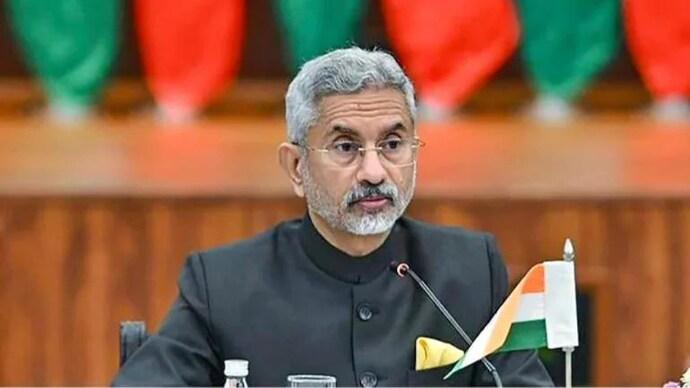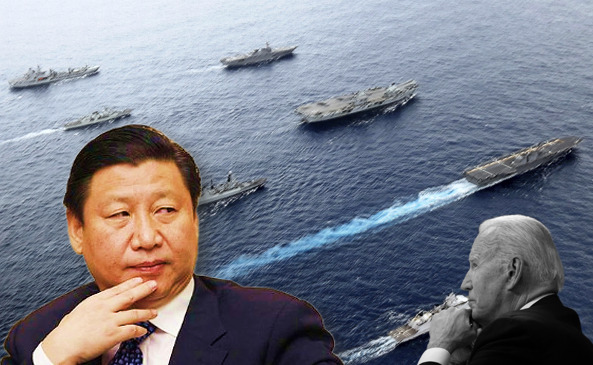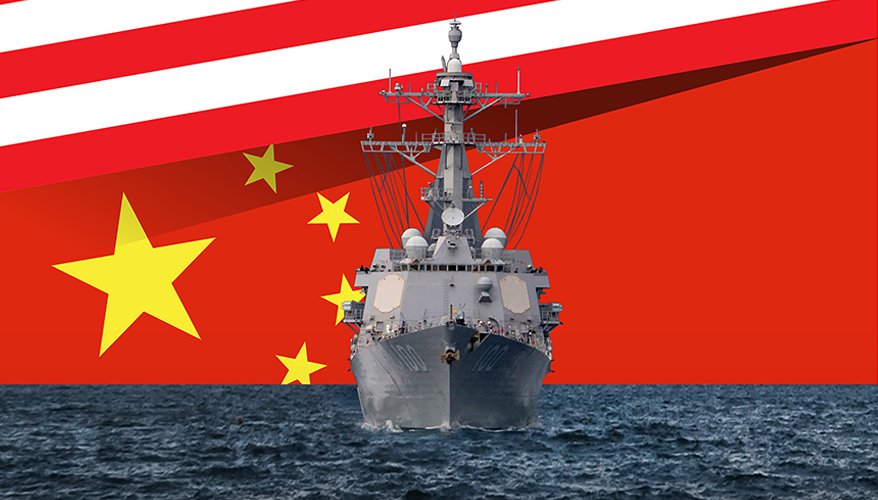External Affairs Minister, S. Jaishankar, Raises Deep Concerns About The Escalating Presence Of The Chinese Navy In The Indian Ocean; With Pakistan, Nepal And Sri Lanka As China’s Allies, What Are India’s Chances?
In recent years, the Indo-Pacific region has become a focal point for geopolitical discussions. India's External Affairs Minister, S. Jaishankar, at the Council on Foreign Relations in New York, raised several pressing concerns related to China's expanding naval presence and organized crime in Canada. The increasing presence of Chinese Naval Ships has raised significant alarm bells in the Indo-Pacific region.

During a recent discussion at the Council on Foreign Relations in New York, India’s External Affairs Minister, S. Jaishankar, expressed deep concerns about the escalating presence of the Chinese Navy in the Indian Ocean, and this uptick in Chinese naval activity has raised alarms in the region.
In addition, Jaishankar shed light on a pressing issue involving Canada, emphasizing the involvement of organized crime, secessionist movements, violence, and extremism within the country.
He pointed out that these elements seemed to operate with relative impunity, mainly due to political factors. Jaishankar also stressed that India had provided Canada with substantial information about these criminal activities and had initiated numerous extradition requests.
Canada-India Diplomatic Strain Continues
Jaishankar also spoke on incidents where Indian diplomats faced threats and Indian consulates had come under attack, attributing these situations to political leniency, expressing that these occurrences were sometimes justified in the name of democracy and urged for specific information to address any such issues.
Regarding allegations made by Canadian Prime Minister Trudeau, Jaishankar assured that the Indian government would take action if the Canadian authorities provided concrete information concerning the killing of Khalistani leader Hardeep Nijjar.

China, India And Indo Pacific Posturing
Shifting the focus to China’s expanding naval capabilities and its assertive posture in the Indo-Pacific region, there are significant ongoing concerns.
Chinese research and survey vessels have persistently conducted ocean mapping operations, with a particular focus on the 90-degree ridge region; the activity includes naming 19 sea-bed features in the Indian Ocean and aims to prepare for potential submarine incursions into the Indo-Pacific.
Over the past decade, Chinese research vessels and strategic satellite tracking ships have been active in the Indian Ocean, mapping the ocean floor to create alternative sea routes through Indonesian straits to reach the eastern African coast.
These routes could enable Chinese nuclear submarines to enter the Indian Ocean undetected, posing a security threat to democratic nations like India, Australia, and Japan.
A specific Chinese research vessel, Hai Yang Shi You 760, recently completed a four-month ocean bed mapping mission in the Indian Ocean and is en route to China, indicating China’s growing naval power, with concerns that Chinese carrier strike forces might patrol the Indo-Pacific by 2025.

The Game Of Making Allies
China’s engagement with island nations off the eastern coast of Africa through initiatives like the Belt and Road Initiative and the provision of offshore patrol vessels for maritime security has raised eyebrows. Countries such as South Africa, Djibouti, Sri Lanka, Pakistan, Myanmar, Cambodia, and Laos have become economically tied to Beijing, raising maritime security concerns in the Indo-Pacific.
India’s Indo-Pacific Posturing
Just a few days ago, we reported that India has significantly expanded its maritime presence into Oman and Mauritius, bolstering its monitoring capabilities in the Indian Ocean Region (IOR).
Through collaborative efforts with allies Oman and Mauritius, India has secured Port Duqm and the Agalega Islands, thereby strengthening its maritime domain awareness and coastal security measures, with a particular focus on Port Louis.
In a substantial move aimed at enhancing its maritime capabilities, India has established a maritime support base at Duqm port in Oman and is on track to provide air support to its close ally, Mauritius, by establishing an air support facility on the northern Agalega Islands, located south of Seychelles.
These strategic initiatives are designed to fortify maritime domain awareness and coastal security for friendly nations within the Indian Ocean Region (IOR), especially in response to the increasing presence of Beijing in the area.
While government authorities have maintained a level of secrecy surrounding these developments, insiders have revealed that the facility at Duqm port in Oman is already operational, serving the dual purpose of maintaining, repairing, and overhauling Indian naval vessels, as well as providing berthing, fueling, and rest facilities for Indian Navy ships in the vicinity and those traversing beyond.
Simultaneously, India has constructed an airstrip on the northern Agalega Islands, situated approximately 1,050 kilometres north of Port Louis, Mauritius; the airstrip is intended to enhance maritime security for the island nation and safeguard its tourism assets in the region.
Reports suggest that the Mauritius government plans to open the facility to the public in December; reportedly, The Indian Navy has already deployed around 50 officers and personnel to manage the airstrip, which will be equipped to handle Boeing P-8I surveillance and anti-submarine warfare aircraft of the Indian Armed Forces.
Prime Minister Pravind Jugnath of Mauritius, who met with Prime Minister Narendra Modi on September 8 and was a special invitee to the G20 Summit in Delhi, has played a crucial role in these developments.

The decision to establish support facilities in Oman and Mauritius is partially driven by the escalating activities of the People’s Liberation Army (PLA) Navy in the Indian Ocean Region.
National security planners estimate that the PLA Navy Carrier Strike Forces are expected to patrol the IOR by 2025-26, as the PLA continues to rapidly expand its already formidable surface and subsurface naval assets.
According to data from South Block, the number of Chinese vessels operating in the IOR has steadily increased, with as many as 24 Chinese ships entering the Indian Ocean in 2023 alone; these vessels include PLA Navy ships, satellite and ballistic missile tracking ships, as well as scientific research and surveillance vessels.
In 2019, there were 29 such ships, and this number grew to 43 by 2022 and on average, there have been around six PLA Navy assets in the IOR each month this year, according to South Block data.
With the increasing number of Chinese ships and warships transiting through the Malacca Strait, Sunda Strait, Lombok Strait, and Ombi-Wetar Strait in Indonesia, India faces the dual imperative of monitoring PLA activities in its vicinity and providing coastal and maritime security to its key allies in the Persian Gulf and the South Indian Ocean, according to experts and analysts.

The View Point
In the midst of India’s strategic initiatives to bolster its presence and maritime security in the Indian Ocean Region (IOR), the specter of China’s expanding footprint continues to cast a significant shadow over the geopolitical dynamics of the region.
China’s naval ambitions in the IOR have been a subject of growing concern for India and its allies, and Beijing’s assertive moves, including the establishment of military bases and the regular deployment of its naval assets, signal its intent to extend its influence far beyond its immediate shores.
The presence of Chinese naval vessels and research ships in the Indian Ocean not only raises questions about freedom of navigation but also stresses the economic and geopolitical significance of this vital maritime corridor.
China’s expanding presence in the IOR is not limited to military operations alone; its Belt and Road Initiative (BRI) projects, including the China-Pakistan Economic Corridor (CPEC) and the Hambantota Port in Sri Lanka, have further solidified its strategic interests in the region.
The urgency to counterbalance China’s influence in the IOR is apparent for India; hence, in addition to the maritime support base in Duqm port, India is actively engaged in strengthening maritime cooperation with a range of nations, from Japan to Australia, under the framework of the Quad (Quadrilateral Security Dialogue).
The Last Bit, As the Indo-Pacific region witnesses a surge in strategic maneuvering and maritime activities, India’s apprehensions over China’s naval expansion and the ongoing diplomatic discourse with Canada are significant concerns.




